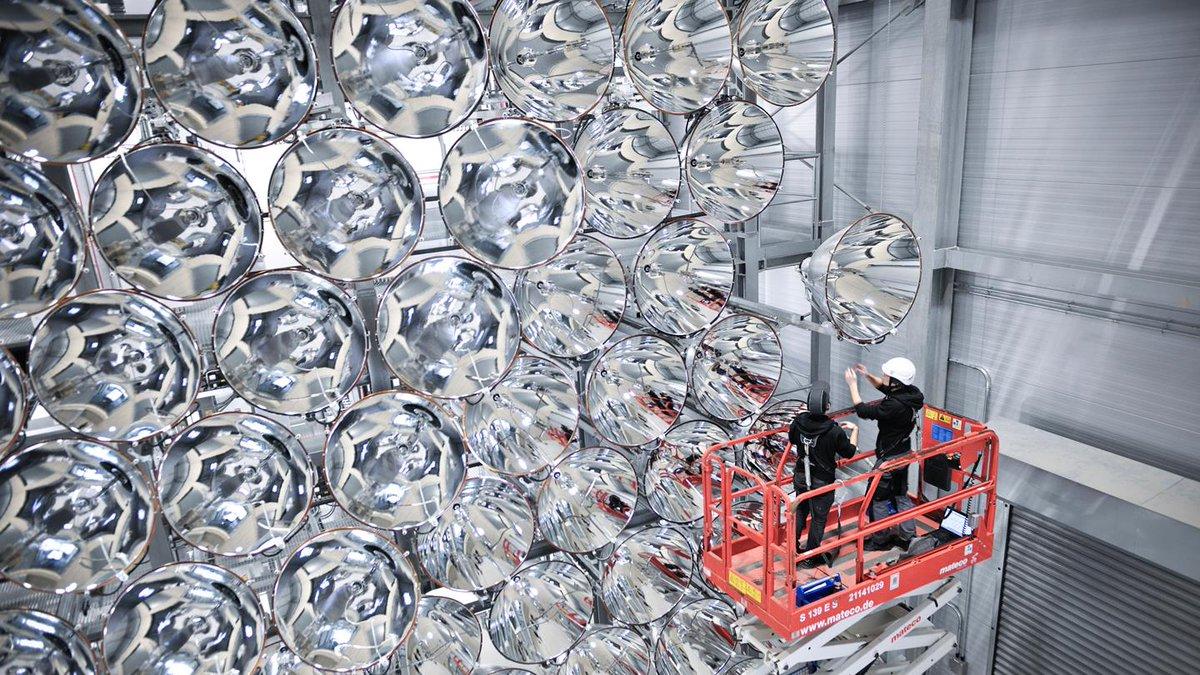German Scientists Create Artificial Sun For Researching Alternative Fuel
The German Aerospace Center has created "Synlight," a tool that will be used in studying alternative fossil fuel options with solar energy and hydrogen. We break down how it works, and what scientists hope to learn from the results.
Updated May 24 2019, 9:52 a.m. ET
For those that wonder what it would be like to have the sun directly on our Earth, a team of scientists at the German Aerospace Center (DLR) have the answer for you. They have built “Synlight,” an enormous lamp that’s dubbed as an artificial sun to further research if solar power is efficient for vehicles.
Researchers are continuing to figure out the best way to replace fossil fuels in the future. Not only are they a limited resource, but they are hazardous to the environment with carbon dioxide emissions. Every year, reports continue to churn out that worldwide CO2 levels reach their highest point. It has hit 400 parts per million back in 2016, and that is considered a level that cannot be fixed. A recent report by Chelsea Harvey from The Washington Post explains how big of a change this has been.
"Current concentrations of CO2 emissions are at their highest in human history, currently hovering around 400 parts per million and continuing to rise. Before the Industrial Revolution, carbon dioxide concentrations had settled into an average of about 280 parts per million."
To put things in a gloomy perspective, that number could rise to 900 parts per million by the end of 2100. Once all fossil fuels have been exhausted in the next 300 years, it could be all the way up to 5,000 parts per million. Obviously, this trend has to change.
One favorite alternative is hydrogen, although it has its pros and cons against electric-fueled vehicles. It is believed that hydrogen fuel cells won’t break down as quickly, mileage is more efficient, and there would be a natural ease of filling up cars like people do with gasoline.
However, more research has to be done. Many argue that it is not much cleaner and hydrogen fuel cells are not very efficient. A strong negative is the amount of electricity required to produce hydrogen. That is why scientists are hoping that solar energy can aid with hydrogen-fueled vehicles.
So what does all that have to do with Synlight? It is an easier and more efficient way to study in Europe. Many parts deal with frequent cloud cover, and the sun is lower in the sky in Germany’s location. When the sun is lower, that means it is less powerful in that area. Lacy Cooke of Inhabitat explains how the oversized lamp works.
"Synlight’s 149 spotlights are similar to those commonly used in cinema projectors. According to DLR, “These enable solar radiation powers of up to 380 kilowatts and two times up to 240 kilowatts in three separately usable irradiation chambers, in which a maximum flux density of more than eleven megawatts per square meter can be achieved."
Of course, this research doesn’t come without a heavy bill. The cost for manufacturing Synergy clocks in at about $3.8 million USD. The electricity the artificial sun uses is, obviously, jarring. A four-hour session of the lights on is equivalent to an entire family’s usage in one year. Despite consumption flaws, it could still be a very important tool in finding alternative fossil fuel resources.

